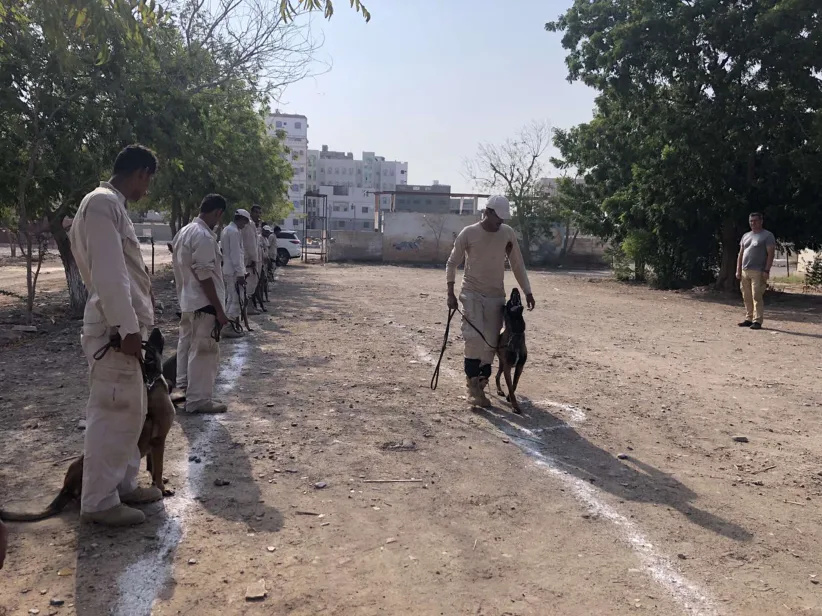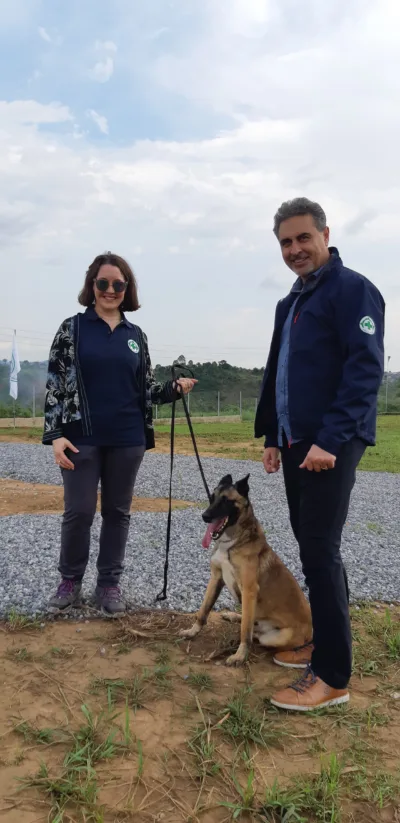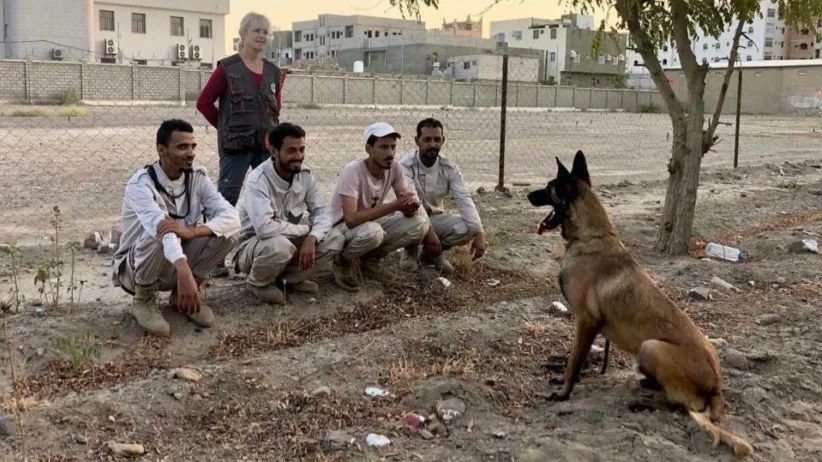Norwegian People's Aid in place in Yemen
The United Nations has called Yemen “the world’s worst humanitarian crisis of our time”. The civil war that followed in the wake of the Arab Spring in 2011 has cost over 100,000 lives- driving four million people to flee and triggering the world's worst food crisis. Not least, years of warfare and air strikes have left huge amounts of explosives on the ground.

Sile Marie Sammon is the new desk adviser at Norwegian People's Aid, and has been given, among other things, the demanding task of following up the newly established humanitarian mine action and disarmament programme in Yemen.
What is NPA's mission in Yemen?
"Initially, we are planning to do three things in Yemen: deliver mine detection dogs and train their handlers, guide and develop the capacity of the authorities in the use of mine detection dogs, and teach the civilian population how to protect themselves from explosive weapons. The first two activities we do in cooperation with the UN Development Programme (UNDP), the third is our own protection programme, Conflict Preparedness and Protection (CPP), which we already operate in war-torn countries such as Syria, Somalia and Myanmar", Sile explains.
It has taken several years to establish a program in Yemen, so 14 October 2021 was a key milestone when 12 mine detection dogs from NPA's mine detection dog center in Sarajevo could safely put their paws on the ground in Aden, in the far south of the country. "One of NPA's foremost mine detection dog experts is in place to guide and advise the Yemeni mine clearing authorities, YEMAC, on the operational deployment and quality management of Mine Detection Dogs. During the project, two international NPA team leaders will be tasked with training YEMAC's dog handlers", she adds.
NPA will continue to work with the UN Development Programme in Yemen and will, among other things, help develop national standards and procedures for Mine Detection Dogs. "Finally, our CPP programme will teach the civilian population how best to protect themselves and their families from injuries and other suffering when a war situation arises. The CPP programme is designed to work for all age groups, and has different modules for children, adolescents and adults. This includes routines for evacuation, basic fire safety and first aid. On a global basis, we have trained a total of 300 000 civilians in CPP since 2014."
Enormous need for mine clearance
How severely affected by explosives is Yemen?
"There are huge quantities of explosives in Yemen. These stem from a number of armed conflicts stretching all the way back to the 1960s. While the exact scope of the explosives contamination remains unclear, we do know that the civil war has significantly exacerbated the problem. Large parts of the population live in areas where explosive weapons are located because much of the fighting has been in urban areas. This is everything from conventional and improvised land mines to cluster bombs and large aerial bombs. On top of this comes ammunition that is left behind after fights on the ground," Silje explains.
Will Norwegian People's Aid be clearing mines at any point?
"The humanitarian need for explosive clearance in Yemen is enormous. Mines and explosives pose a daily threat to the civilian population, and also make it difficult for organisations to provide emergency assistance. Therefore, when the situation permits, it will be natural to look into the possibilities of carrying out clearance activities", Sile says.
What will it take to do this?
"Yemen is one of the world's poorest countries, so in order to clear mines and explosives, they are firstly dependent on international donor funding", says Sile. "Moreover, in war zones such as Yemen, it is always a matter of security and access to areas. Coordination from the authorities is also a prerequisite. In Yemen, the conflict between the authorities that have been displaced to Aden, and the Houthis who have taken the capital, Sana'a, have effectively weakened and divided the mine-clearing authorities in two. In the south, YEMAC has opened an UN-backed coordination centre so that international organisations such as NPA can carry out activities. In the north of the country the YEMAC in Sana’a is also requesting assistance from the UN and international community. As a neutral humanitarian organisation, NPA aims to work on both sides of the conflict to alleviate the suffering of civilians affected by explosive weapons."

Four million displaced
What is the status of the country today?
"The civil war in Yemen has been going on for eight years, and unfortunately there is no end in sight as of today. The parties to the conflict are made up of the Saudi-led coalition supporting the Yemeni government on one side, and Iranian-backed Houthi rebels on the other. The war is estimated to have displaced four million Yemenis - and more than 20 million people are living in need", explains NPA's desk adviser.
In February 2021, the Houthi controlled government in the north launched an offensive to take the government-controlled area of Marib. In March, missiles were fired into Saudi Arabia, where they hit oil tankers- oil refineries and airports, among others. The Saudi-led coalition responded with a bombing offensive against the capital in which several hundred Houthi fighters and civilians died. The strike was the deadliest since 2018, and has only helped push the peace process back further. In late November, it was again reported that the Houthis had fired missiles and drones at Saudi Arabian airports and oil installations.
Yemen has signed the Mine Convention and pledged to be free of landmines by 2023. Is this realistic?
"This is one of the tragedies of the most recent conflict. Prior to the latest conflict, the Government of Yemen and YEMAC were making good progress on clearing all known minefields from previous conflicts. But the new conflict has only added more explosive ordnance contamination and anti-personnel mines to the previous contamination. Given that there is an ongoing full-scale civil war in the country, it goes without saying that being free of landmines by 2023 is unrealistic. Yemen has therefore asked for an extension on the deadline several times. During the 19th state party meeting of the Mine Convention, they were given a postponed deadline once more. The current deadline is set for 5.3. 2023, but another extension request is expected to be submitted in 2022", Sile concludes.

The conflict in Yemen
- During the Arab Spring in 2011, there were large demonstrations in Yemen, where the people demanded that Ali Abdullah Saleh, who had been president since the late 1970s, resign.
- Abdrabbuh Mansour Hadi took over the presidency in 2012, but the situation continued to escalate. On top of tackling corruption, unemployment and food insecurity, he quickly faced resistance from jihadists, the seperatist movement in the south of the country and the security forces of former president Saleh.
- From 2014, the country erupted into full civil war after the Houthi movement, an Iranian-backed Shia minority in the country, took control of the capital, Sana'a, demanding a change of government.
- In January 2015, the Houthis besieged the presidential palace and deposed the government of President Abd Rabbu Mansour Hadi amid failed negotiations. Hadi fled to Aden but has reportedly been in exile in Saudi Arabia since December 2017.
- In March 2015, a US-backed Saudi-Arabian coalition sent one of the Gulf states bombers against the Houthis. In addition to airstrikes, the coalition imposed extensive economic sanctions. Since then, the fighting has only continued.
- In 2016, the United Nations sought to bring about peace talks between the Houthi movement and the Yemeni government. The parties failed to reach an agreement. That same year, the Houthi movement and the government of former President Ali Abdullah Saleh formed a political council to govern Sana'a and much of northern Yemen.
- In December 2017, Saleh broke with the Houthis and urged his followers to join armed attacks against their former allies. The former president's forces were defeated in two days, and Saleh killed.
- Iranian arms shipments to the Houthis have since 2015 been effectively halted in the Gulf of Aden by a Saudi naval blockade. Iran has responded by sending a naval convoy, which has further escalated the conflict.
- The conflict that originally started with a popular uprising against the government can today best be read as part of the long-running major political conflict in the Middle East between Saudi Arabia and Iran.
- Over the last few months fighting has intensified in Marib, the Yemeni government’s last bastion in northern Yemen. In response, the Houthis have come under heavy bombardment from the Saudi-led military coalition supporting the government. Marib city is key to controlling Yemen's significant oil and gas resources. The battle was halted multiple times due to negotiations, but the rebels renewed their attacks in February, there was a major assault in June, and an intensified push since September. The Saudi-led coalition has been reporting high death tolls in almost daily strikes against the Houthis since October.

